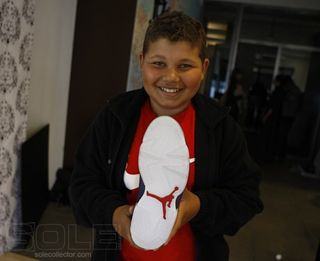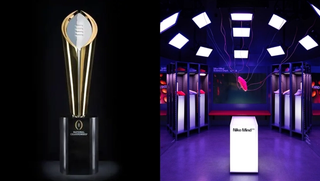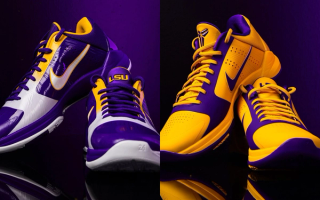Just — Why?
A lot of people are seeing Nike’s Doernbecher retro releases through rose-colored glasses, but I’m seeing red.
Today we’re seeing the fifth and (likely) final retro release from Nike’s retrospective DB drops — Jordan Dark’s 2009 Air Jordan 6 — a pair that many have been chasing down for years, so it’s not surprising that people are happy that they’re back.
To me, the decision to retro any DB is exceptionally short-sighted. The only real goal that I observe is Nike’s hunger to drum up hype in the now. Sure, some money goes back to the hospital — but at 6,000 to 20,000 units per release, it’s not a significant contribution to the hospital by Nike’s standards.
The entire thing feels rushed. There was zero build-up, no warning and, most importantly, no inclusion of the kids who initially designed the pairs. I possibly could have tolerated it had Nike revisited the designers in their current-day situations, post-OHSU life. You know, to see how far they’ve come, what they’re doing now, what their experiences at the OHSU taught them and what they’re looking for next in life.
But, all we got were SNKRS app notifications.
It’s not even mentioned on Nike’s own news blog — just a three-sentence blurb on the side of the SNKRS release page.
Way to make the kids feel important.

Past designers like Jordan Dark (Air Jordan 6) have been pushed to the side for Nike to create hype off the back of their sentimental designs. Image via Sole Collector
But who gives a fuck about the story of each child’s courageous battles when you can just build up some market clout off the back of their sentimental designs? Right?
What repercussions does such a maneuver make on the Doernbecher Freestyle collections? How will this affect the market’s perspective of the future and past Doernbecher freestyle collections?
Doernbecher releases are meant to be exclusive, because — in contrast to limited-edition celebrity collaborations — these are special releases. Each child who designs a Nike or Jordan Brand Doernbecher sneaker obviously has an incredible story of courage to tell. It’s an outlet for the kids to share their life with the world, and for the world to root for them back. It needs to not only feel special for us, but for them, too. Re-releasing Doernbecher pairs can make their efforts feel like a pawn in Nike’s hype-driven marketing plan. Re-releasing a DB not only cheapens the original release (no, I’m not talking about resale value) but it puts the entire future of the partnership into question. Will pairs be less sought after now, knowing that one day they will probably release again? They definitely lose their influence thanks to Nike’s effort, making the entirety of the last 15 years of collaboration less impactful.
Just because people want them, and just because units will sell-out, it doesn’t mean it’s always good for the brand. For a project that has historically shown so much compassion and consideration, this decision seemingly had neither.




